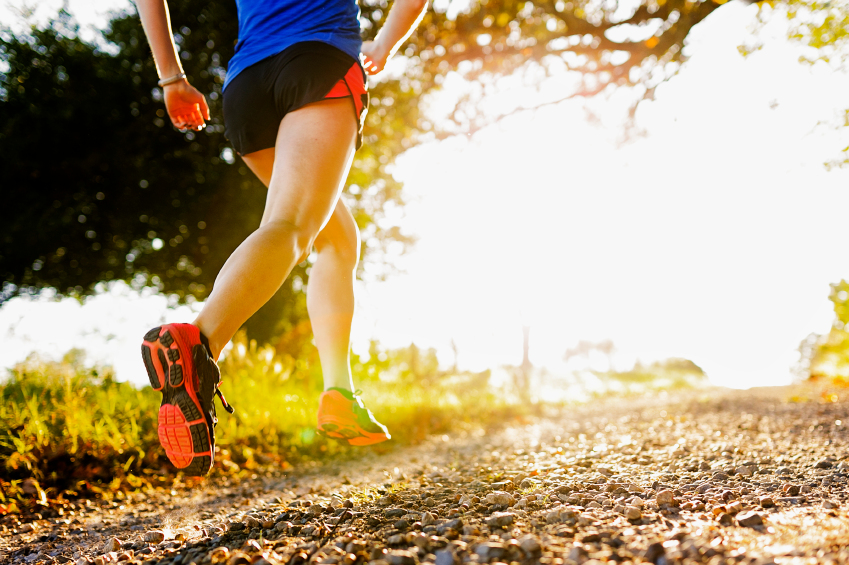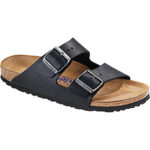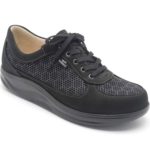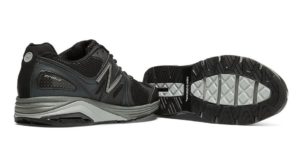The Best Walking Shoes for Flat Feet

Finding walking uncomfortable?
Check the soles of your feet before you veg out on the couch all day to recuperate. Nearly 30 percent of Americans struggle with flat feet, a mild physical deformity of the foot.
Known by the medical name pes planus (or sometimes “fallen arches”) this condition is almost always mild, requiring little to no intervention. But the lowered arch in flat feet can cause muscle fatigue and pain. In advanced cases, osteoarthritis can occur.
Whether you’re walking to work or just getting a bit of fresh air, finding the right support is vital to preventing further. Understanding the anatomy of a flat foot and how specialized support can help is the first step to finding the best shoes for those long evening walks. If you’re feeling a little flat about the whole thing, this short guide should brighten up your day.
Flat Feet: The How’s And Why’s
People who suffer from flat feet (be they man, woman, or child) often complain about fatigued muscles in the foot, ankle, and shin. What causes this is the pressure your foot meets with each time it touches the ground.
Foot physics vary person to person, but nearly everyone shares the same baseline in the absence of medical problems. In the average foot, pressure comes in at the heel, down the side of the foot, and then gets dispersed out around the ball of the foot. Pressure along the side of the foot radiates upward, where (hopefully) a strong ankle and calf provide the necessary support to keep you upright and comfortable.
In flat feet, the sole and arch make immediate contact with the ground, so the pressure isn’t dispersed correctly. The ankle and foot become unstable, causing your muscles to fight one another in an effort to prevent rolling or an unstable gait. They eventually become tired, tight, and achy.
Referred pain into the shin, thigh, hips, and lower back is exceptionally common and almost to be expected later in age.
For someone with flat feet, walking large distances becomes excruciating. After a few hours of walking, suddenly you’re achy-breaky tootsies desperately need a break. This can dissuade you from getting enough exercise; after all, who wants to experience pain on a regular basis?
By far, the best way to address the problem is with proper foot support. Physiotherapy can help, too, but you can significantly reduce your pain levels just by choosing the right shoes.
Birkenstocks

Need a sturdy pair of sandals to take you from downtown to the beach to the trail? Regular sneakers and trainers can feel restrictive on the beach, but going barefoot is one of the worst things you can do for flat feet. Instead, grab a pair of Birkenstock sandals with cork soles. As you wear them, the shoes mold to your foot; after just a few short weeks, you’ll find they match the shape of your arch almost perfectly.
Birkenstock is well-known for nature-inspired shoes with a high level of quality, but they go all-out with style also. Gone are the days when the company offered just one main style. Today, you’ll find everything from dressy shoes to very basic slip-ons in the brand’s line.
True “Walking Shoes”
Flat feet, high arches, or very average feet with no special features; nothing keeps your feet as comfortable as a good pair of walking shoes. As an individual style, the walking shoe focuses on providing support for the foot as you walk. It evens out your gait and provides excellent comfort, even when you’re out for hours. High-quality walking shoes are a must-have for tourists, urban adventurers, and anyone else who spends a great deal of time on their feet.

For flat feet, choose walking shoes that feature a snug and supportive roll bar at the Achilles tendon, motion stabilizing materials, and a low-arched design. Straight lasted soles are ideal; they’ll keep your foot aligned, and thus, spread pressure evenly.
Design-wise, the sky’s the limit. Walking shoes come in a broad range of styles, and may mimic hiking boots, trainers, dress shoes, and business-appropriate oxfords. Others, like the Finn Comfort walking shoe, have a distinctly urbanized style.
Trainers
Trainers, sometimes referred to as athletic shoes, support flat feet in a few different ways. The primary benefit lies in the fact that trainers are excellent at absorbing shock, regardless of the surface you’re walking on. For someone with flat feet, who probably experiences pressure along all areas of the foot rather than just the ball or heel, that can ward off pain and joint problems later on.
But no two trainers are alike; just as it is with every other shoe, the style you purchase can and does matter. When buying, look for shoes with an extended mid-sole and straight lashing. Supportive memory foam or gel insoles with a slightly curved arch work well for some; the mild rise in the center of the foot slightly corrects the deformity in mild cases.
To avoid: high-arch trainers with a deep rising curve in the mid-sole. Your flat feet won’t sit in them correctly, inducing pain.

Brand-wise, look to New Balance for flat-footed relief. Any of these five trainers – especially the W1540 – should suit most women just fine. Men have their own version, the M1540, with the same features in a more masculine design.
Orthopedic Shoes
Around 50 years ago, people looked at wearing orthopedic shoes as undesirable. Mid-century orthopedics focused entirely on support, sacrificing style to ensure an even and comfortable gait. Any sense of fashion went out in the window, and was then immediately replaced by a higher degree of cushioning and a bigger, bulky design.
Unfortunately, the idea that orthopedic shoes must be ugly to fit right is pervasive – not to mention entirely untrue! At first glance, you’d never even know that most of today’s orthopedics even contained special supportive technology. It’s easy to find stylish orthopedic shoes for women and men in a broad range of fashion genres.
Orthotics aren’t like your standard sneaker; many insurance plans consider them a form of medical device, even if they do look as good as they feel. The designation isn’t just an accident; orthotics often contain high-end support technology and an anatomically-correct design that hugs all areas of the foot evenly.
If you have flat feet, a shoe like the Wrangler by Deer Tracks may help; the removable footbed slides out to make way for therapeutic insoles if needed. Others, like the Fit – AreniOne by the same brand, have a built-in fiberglass shank that aligns the arch of the foot.
Regardless of the style you choose, orthotics can help to alleviate flat foot symptoms. Even if you don’t wear them all day, wearing them around the house or when relaxing will still provide you with measurable results.
Staying stylish while supporting flat feet doesn’t have to be a distant dream. From orthopedic shoes to stylish, gel-lined dress shoes for work, modern footwear brands want to support your desire to meld fashion and comfort together. Kick up your feet, let those tender toes relax, and find a comfortable new pair of shoes to fall in love with today.